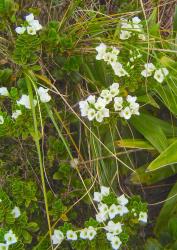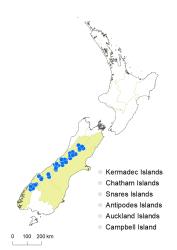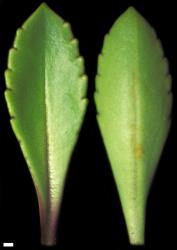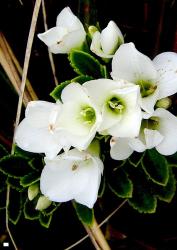- ≡ Parahebe macrantha (Hook.f.) Heads, Bot. J. Linn. Soc. 115: 79 (1994) var. macrantha
- ≡ Hebe macrantha (Hook.f.) Cockayne & Allan, Trans. New Zealand Inst. 57: 43 (1926) var. macrantha
Lamina oblanceolate or rarely lanceolate to elliptic, 12–22 (rarely 8–30) mm long, 6–12 (rarely 4–13) mm wide, widest point usually beyond halfway; teeth in 2–11 pairs; petiole 1.5–7.5 mm long. Peduncle 6.0–30.7 mm long; lowermost bracts 4–9.1 mm long; pedicels 1–10 (rarely –15) mm long. Calyx lobes (rarely 5–) 7–10 mm long.
Plants of V. macrantha var. brachyphylla are distinguished from var. macrantha by shorter leaves that are mostly elliptic to broadly elliptic in shape and have fewer marginal teeth, and by their generally shorter petioles, peduncles, lowermost inflorescence bracts, and calyx lobes. V. macrantha var. macrantha shows more geographical variation, tending to have larger leaves in the southern part of its range, and identification is most likely to be difficult where the two varieties meet near Lake Tennyson. See Bayly et al. (2004) and Bayly & Kellow (2006) for more information.
South Island: western Marlborough, western Canterbury, north-west Otago, Westland, northern Fiordland.
Penalpine grassland and low shrubland. Recorded elevations range from 900 to 1910 m.
2n = 42 (see Bayly & Kellow 2006, as Hebe macrantha var. macrantha).







